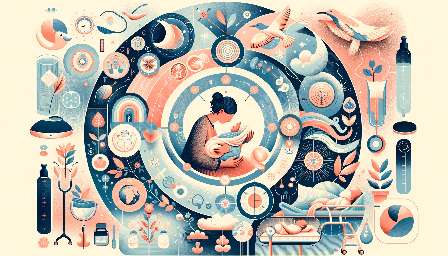Understanding the role of hormonal preparations in labor and birth is crucial for expecting mothers and healthcare professionals. These preparations play a significant role in the physiology of pregnancy and childbirth, ensuring a safe and healthy delivery. In this comprehensive topic cluster, we will delve into the intricate relationship between hormonal preparations, the physiology of pregnancy, and childbirth.
Physiology of Pregnancy
The physiology of pregnancy involves various hormonal changes that prepare the body for childbirth. One of the key hormones involved in pregnancy is progesterone, which helps maintain the uterine lining and prevents contractions that could lead to premature labor. Additionally, estrogen levels rise throughout pregnancy, contributing to the growth of the uterus and the development of breast tissue in preparation for breastfeeding.
As pregnancy progresses, the placenta also plays a crucial role in hormone production. It produces human chorionic gonadotropin (hCG), which supports the corpus luteum in the early stages of pregnancy, ensuring the continued production of progesterone. The placenta further secretes estrogen and progesterone to maintain the pregnancy and promote fetal growth. These hormonal changes create a unique physiological environment that supports the development and nourishment of the unborn baby.
Hormonal Preparations for Labor and Birth
As the body prepares for labor and birth, hormonal changes become increasingly essential. One of the key hormones involved in the initiation of labor is oxytocin. Often referred to as the 'love hormone,' oxytocin plays a crucial role in uterine contractions, cervical dilation, and the progression of labor. It is also involved in the bonding between mother and baby during and after childbirth.
Another important hormone associated with labor is prostaglandins. These lipid compounds are involved in softening and ripening the cervix, making it more favorable for childbirth. Prostaglandin preparations, such as dinoprostone, are commonly used to induce labor or prepare the cervix for labor in cases where the natural onset of labor is delayed or unfavorable.
Childbirth
During childbirth, the intricate interplay of hormones continues to facilitate the process. Endorphins, the body's natural pain-relieving hormones, are released to help manage the discomfort of labor. These hormones contribute to a sense of well-being and can help the mother cope with the intensity of contractions and the overall birthing experience.
Furthermore, the release of oxytocin during childbirth not only stimulates uterine contractions but also promotes the ejection of milk during breastfeeding. This dual role of oxytocin highlights its significance beyond labor and birth, emphasizing the hormonal connections between childbirth and the early stages of nurturing the newborn.
In Conclusion
The understanding of hormonal preparations for labor and birth in the context of the physiology of pregnancy and childbirth is essential for both expectant mothers and healthcare providers. By recognizing the crucial role of hormones such as oxytocin, prostaglandins, and endorphins, it becomes evident how these hormonal preparations orchestrate the complex processes of labor and delivery. Embracing this knowledge empowers individuals to make informed decisions and fosters a deeper appreciation of the remarkable physiological journey of pregnancy and childbirth.


